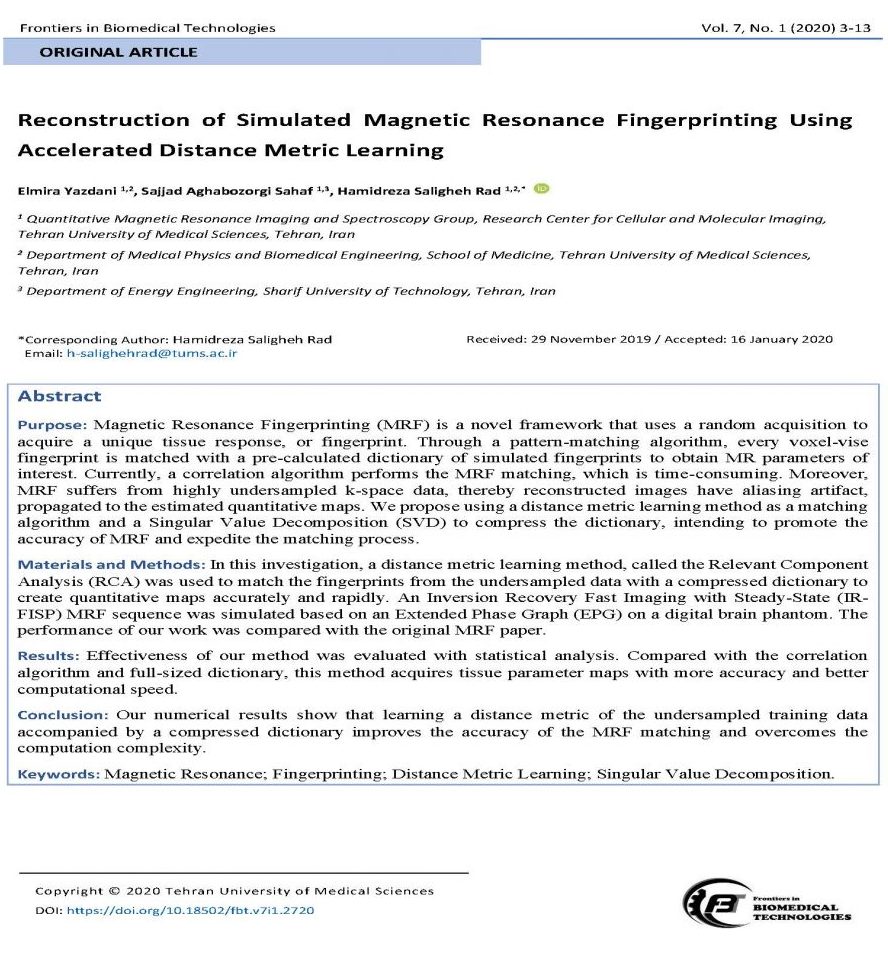Reconstruction of Simulated Magnetic Resonance Fingerprinting Using Accelerated Distance Metric Learning
Abstract
Purpose:
Magnetic Resonance Fingerprinting (MRF) is a novel framework that uses a random acquisition to acquire a unique tissue response, or fingerprint. Through a pattern-matching algorithm, every voxel-vise fingerprint is matched with a pre-calculated dictionary of simulated fingerprints to obtain MR parameters of interest. Currently, a correlation algorithm performs the MRF matching, which is time-consuming. Moreover, MRF suffers from highly undersampled k-space data, thereby reconstructed images have aliasing artifact, propagated to the estimated quantitative maps. We propose using a distance metric learning method as a matching algorithm and a Singular Value Decomposition (SVD) to compress the dictionary, intending to promote the accuracy of MRF and expedite the matching process.
Material and Methods:
In this investigation, a distance metric learning method, called the Relevant Component Analysis (RCA) was used to match the fingerprints from the undersampled data with a compressed dictionary to create quantitative maps accurately and rapidly. An Inversion Recovery Fast Imaging with Steady-State (IR-FISP) MRF sequence was simulated based on an Extended Phase Graph (EPG) on a digital brain phantom. The performance of our work was compared with the original MRF paper.
Results:
Effectiveness of our method was evaluated with statistical analysis. Compared with the correlation algorithm and full-sized dictionary, this method acquires tissue parameter maps with more accuracy and better computational speed.
Conclusion:
Our numerical results show that learning a distance metric of the undersampled training data accompanied by a compressed dictionary improves the accuracy of the MRF matching and overcomes the computation complexity.

